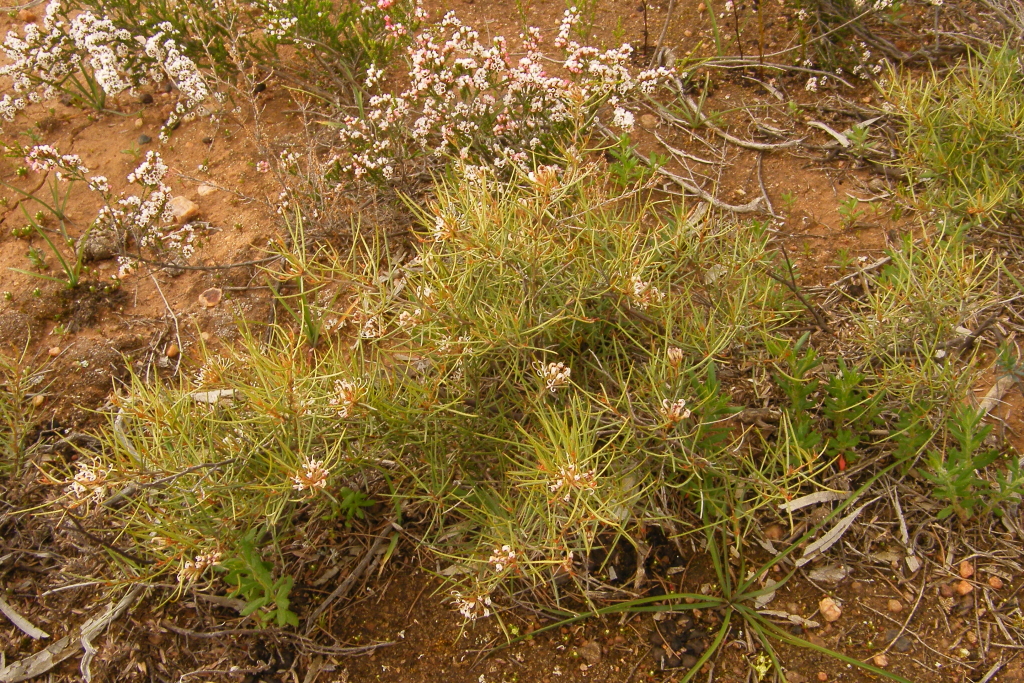Grevillea micrantha
Meisn.Spreading, often root-suckering shrub 0.3–0.6 m high. Leaves entire, linear, often curved, 1–4 cm long, 0.6–1.0(–1.5) mm wide; upper surface often scabrous, especially along the veins; grooves of lower surface silky; margin vertically refracted about the intramarginal vein (leaf oblong in cross-section), usually enclosing the lower surface except for the midvein. Conflorescences c. 1 cm long, sessile or very shortly pedunculate, regular, umbel-like; perianth white or pale pink, outer surface with appressed hairs, inner surface usually glabrous with a discolorous cushion-like pulvinus on each ventral tepal opposite the ovary, occasionally pulvinus bearing a few minute (less than 0.2 mm long) hairs; pistil 5–6.5(–8) mm long; ovary stipitate, glabrous, style white to pink, with minute hairs or papillae just below apex, pollen presenter oblique. Fruits glabrous. Flowers Aug.–Jan.
VVP, VRiv, Gold, CVU, GGr. Endemic in south-western Victoria, with sporadic occurrences in the area bounded by the Brisbane Ranges-Wedderburn-Victoria Range (eastern fall)-Portland. Grows in poor stony soils in ironbark or mallee woodland.
Plants from the Mt Clay area near Portland (Grevillea linearifolia 'unassigned 7' sensu McGillivray and Makinson 2000) have broader and less granular leaves, which are less strongly enclosed on the undersurface and with the margin refracted at more than 120°. Plants from the Brisbane Ranges also have the leaf lower surface partly exposed.
Similar to Grevillea alpivaga and G. gariwerdensis (see notes for these species).
Makinson, R.O. (1996). Grevillea. In: Walsh, N.G.; Entwisle, T.J., Flora of Victoria Vol. 3, Dicotyledons Winteraceae to Myrtaceae, pp. 845–870. Inkata Press, Melbourne.
 Spinning
SpinningMakinson, R.O. (2000). Grevillea. In: Australian Biological Resources Study, Flora of Australia vol. 17A, Proteaceae 2, ~Grevillea~, pp. 1–524. CSIRO Publishing.

